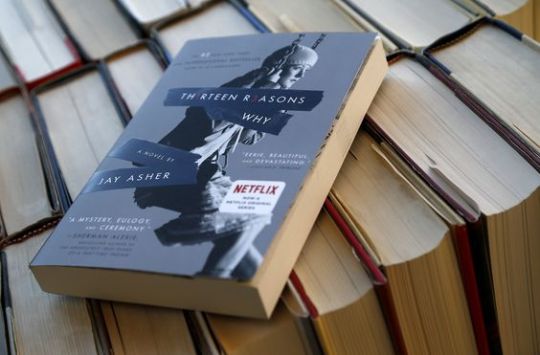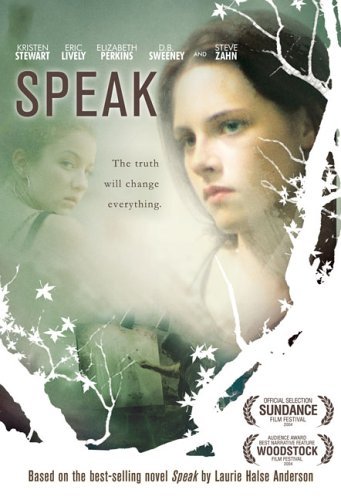#with any immediacy (thus also providing reason to leave it to implications)
Explore tagged Tumblr posts
Text
YA Book Adaptations
Although live-action adaptations of print literature has been an ongoing trend for years, young adult literature has recently emerged as a popular source of inspiration, mainly because they touch on sensitive topics that young adults may experience in their everyday lives. These topics often center around themes of bullying, sexuality, violence and assault, mental illness, and suicide. The issue then becomes whether these live-action adaptations accurately and sensitively portray the subject matter, or sensationalize and romanticize the characters’ struggles.There can be many advantages of these adaptations as long as the producers have the necessary research and consideration to do them well.
Despite the fact that young adult literature is a popular pool for live-action adaptations, the results may not always be positive ones. A common argument is that these adaptations may deter young adults from actually reading the novels on which the TV show or movie is based on. Rather than reading the books and imagining everything themselves, young adults can now watch the stories unfold in front of them with every detail decided for them – with the addition of fancy transitions and background music. Another major issue with adaptations is that the producers are often focused on making a profit, rather than approaching topics in the story with caution. This can lead to the romanticization of sensitive issues and can even trigger harmful trends among viewers.

photo credit: the telegraph
A popular example of this in recent news would be the Netflix adaptation of Jay Asher’s 13 Reasons Why. The novel traces the story of a girl who commits suicide and leaves behind thirteen cassette tapes, each dedicated to a different person, in which she explains how they played a role in her decision to end her own life. Many critics of this show have argued that bringing the book to viewers’ screens portrays a version of suicide that is over simplified or even romanticized, as well as justifying the main characters choice as a result of very specific circumstances. A Snapchat trend emerged after the popularity of the Netflix series where users would snap each other whether they would receive a tape or not from the sender, thus planting the idea that the receiver may play a part in someone’s decision to end their own life. The show’s depiction of suicide as something to be romanticized may also trigger those who live with depression and thoughts of suicide. When the main consumers of content are young and facing serious situations like the one portrayed in 13 Reasons Why, those who are responsible for bringing those print fictions to life must consider the implications of their content because they can never know for certain how the viewers will interpret it.

However, when done well, live-action adaptations can be used to a great advantage, given the amount of popularity they create and the emotional-immediacy they provide on-screen. Because of their high publicity, adaptations are able to connect with a wider audience which is beneficial for promoting not only the adaptations, but the books themselves and related literature. Translating emotions and appeal factors from the book to the screen may give young adults incentive to read the original books and develop a deeper understanding of the subject matter and characters they’ve grown attached to on-screen. As a result, adaptations can serve as a great platform for raising awareness around sensitive topics often addressed in young adult literature. When adapted considerately and accurately, they can help steer viewers away from the stigma surrounding these topics, and instead promote a better sense of understanding, empathy and compassion. They can also provide more hopeful ways of coping and addressing these topics without shaming the characters or their viewers. Successful adaptations will help to create more conversations around these topics, allowing young adults to feel safe in speaking out and trust that they are being heard.

photo credit

photo credit
Two examples of adaptations that are done considerately well include Laurie Halse Anderson’s book Speak and Stephen Chboksy’s The Perks of Being a Wallflower. In the adaptation of Speak, we follow the events of Melinda, a high school student who is struggling to cope after being sexually assaulted at a party. In dealing with this trauma, Melinda becomes mute and isolates herself from friends and family. Respectfully and carefully adapted, the movie not only captures the depressive isolation Melinda feels, but also the fears and guilt she has for not defending herself against her perpetrator. The adaptation is highly successful in distinguishing various forms of nonverbal expression to communicate fear and pain, and how they contrast greatly from one another. For example, scenes of Melinda cutting herself only leads to more detachment and shame, whereas the expression she finds in her artwork promotes healing and confidence in sharing her pain. This eventually helps Melinda regain her voice and in the end, we see her finding comfort in opening up to her mom and discovering she has support from teachers and friends.

Similarly, in the adaptation of Chbosky’s The Perks of Being a Wallflower, the main character Charlie also struggles to cope with sexual assault. Here, the adaptation shows a series of triggering events that eventually spirals Charlie towards attempting suicide. However, what is sensitive about this particular adaptation is that it doesn’t romanticize suicide or the despair Charlie feels. Instead, the adaptation centers around supportive friendships and immediate intervention upon recognizing a suicide attempt, as well as professional care. In the end, we see how Charlie is able to make healthier steps in coping and healing by receiving professional help from a psychiatrist, therapy treatment, and family support. For both adaptations, the authors of the original books were present for the filming and production of the movie adaptations. This shows how dedicated and respectful these adaptations are in honoring the authors’ messages and providing an accurate portrayal of their characters. Both adaptations also promotes how support and professional help can be offered to those who are struggling rather than shaming them.

Having a live-action adaptation of print literature is great as it brings awareness to the book and the topics it discusses, but actually having them adapted and accurately depicted on screen requires a lot of work within the production crew. First and foremost, you would need the right person to create the script on the project to be employed, the screenwriter. Preferably, someone who understands the issues and has read the novel itself can help cast the right actor or actress. Then you would need a director who is willing to approach the theme and topic accordingly without over-glamorizing it. The screenwriters responsibility is to turn the print literature into a script. This gives them the ability to choose which direction they want the live-action adaptation to go and how authentic and detailed it will be. Having them work with the author themselves can offer guidance in this step of the adaptation. Another assistance to consider when bringing print literature to life is consulting medical professionals and those who have first-hand experience in dealing with the topic. A medical professional can advise on how to present the issue without romanticizing it and a person with actual experience with the issue can help understand how to portray a character living with their condition. The adaptations of Speak and The Perks of Being a Wallflower were successful because both movies represented sexual assault and suicide in a manner that respected the author and any audience members with similar experiences. Where as 13 Reasons Why is an example of an adaptation that misrepresents the reality of suicide and because of this, it gives young viewers the wrong message. By keeping these in mind, adaptations have the power to bring print literature to life, promoting young adult literature while also addressing everyday issues that young adults may face.
#reader's advisory#teen fiction#young adults literature#teen and YA social issues#adaptations#group blog post
0 notes